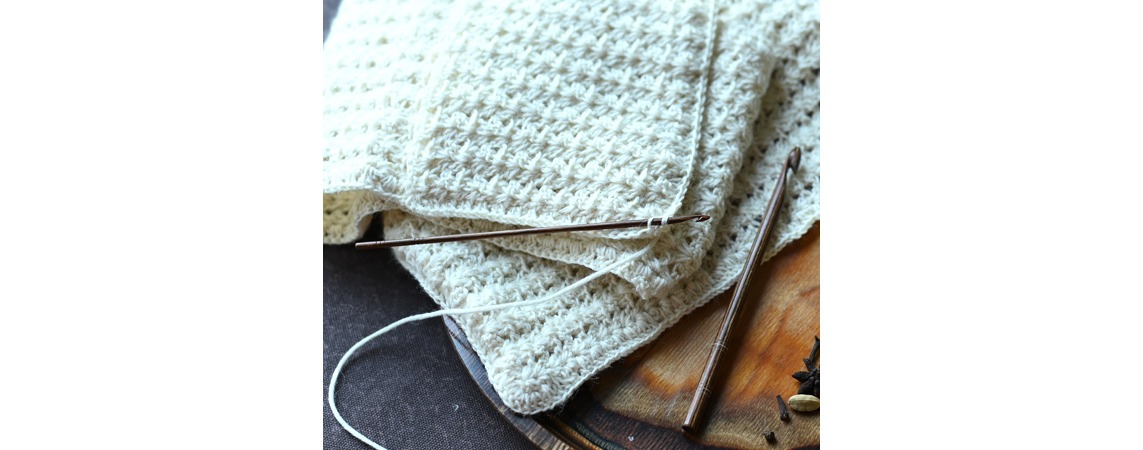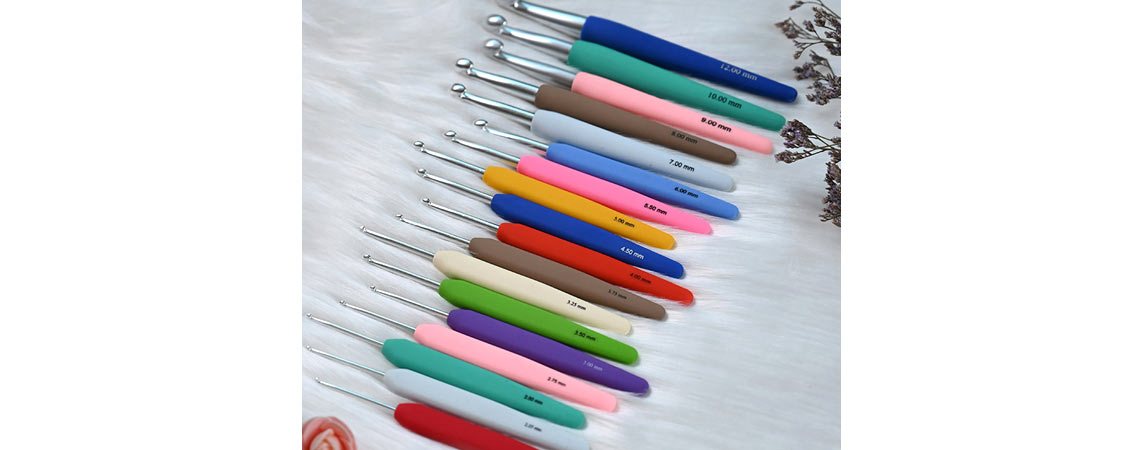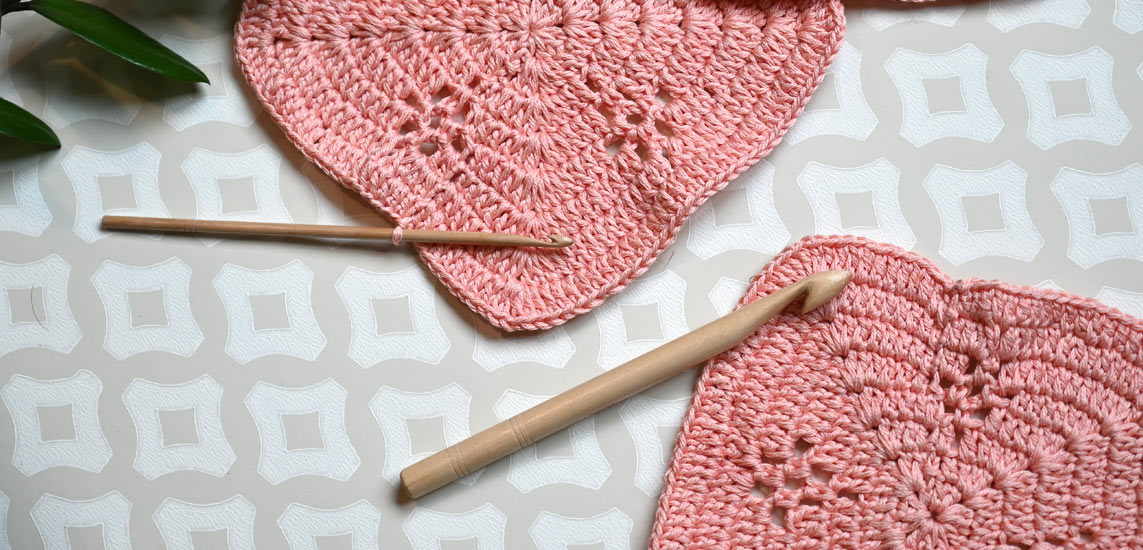The slip stitch is a fundamental crochet technique that is excellent for novice crocheters to master. The slip stitch can be easily worked with any crochet hooks you own, single-ended or specialty Tunisian hooks. In fact, the crochet slip stitch is so important that you’ll notice it is used in nearly all crochet patterns. You can use slip stitches to attach rounds; seam pieces together, and make crochet edging, as well!
The slip stitch is one of the five basic crochet stitches. It’s a rather uncomplicated stitch that is simple to learn. With some practice, the slip stitch can be easily added to your repertoire of crochet skills.

What is Slip Stitch in Crochet?
Crochet slip stitch is very handy. It’s one of those foundational techniques rather than a stitch that you will use time and time again. You’ll use slip stitches in various crochet applications, such as to join rounds for projects such as a hat or a basket, create shaping for sweaters or a cardigan, and move along rows used for lace or surface decorations. So, if you’re ready to learn how to crochet a slip stitch, this blog will provide a step-by-step tutorial and also discuss the various uses of the slip stitch.
Before we start, pick a yarn and any crochet hook. The yarn label mentions the crochet hook size suitable for the yarn. For beginners, it’s best to go ahead with worsted-weight yarn. Select yarn in a light color to make it simpler to spot your stitches. An ergonomic hook or one that feels comfortable to work with will help you produce the best results. Single-ended crochet hooks from KnitPro are offered in smooth wood such as the Symfonie and Ginger series; natural bamboo; vibrant metals such as Zing or ergonomic handles of Waves. You can also work with Tunisian crochet hooks as regular hooks if you do not attach the interchangeable cable that comes with it. If you are new to crocheting, then our beginner's guide to crochet hooks will be of great assistance.
Abbreviation
In both the UK and US patterns the crochet stitch is called “slip stitch” but in the US, it is abbreviated “sl st” and in the UK is abbreviated “ss.”
Chart Symbol
In crochet charts, the slip stitch is represented by a filled dot, or “•”.
Height
The shortest of all the crochet stitches, slip stitch is generally not used for its height but for its versatile uses.
Turning Chain
To start a new row or round of slip stitches, make a turning chain of 1 which is not counted as a stitch in the pattern.
Slip Stitch Fabric
Different from other stitches, slip stitches are rarely used on their own for crocheting a fabric. Rather, the slip stitch is used to connect rounds, make shapes, and, where necessary, move the yarn to another area of the fabric without adding height.
However, a piece of fabric with rows of slip stitches is very dense and warm! The method of crocheting fabric made from slip stitches is called Bosnian Crochet (also Dutch Knitting or Shepherd’s knitting.) Though the fabric is not generally used for patterns, you can find many crocheters and communities favoring the unique look and feel.
Slip Stitch Tutorial
Now with the crochet hook and yarn go ahead with the slip stitch.
Step-by-Step Instructions

The following is a thorough explanation of how to make a slip stitch in crochet.
Step 1: Insert the crochet hook into the following stitch.
Step 2: Put the tip of the hook underneath both of the loops at the top of the stitch.
Step 3: Bring the yarn over the hook, from back to front, and draw a loop of yarn through the stitch.
Step 4: Pull that same loop through the loop on the hook. The slip stitch is finished. You will currently have one loop left on the hook.
You have now successfully completed a slip stitch.
Once you have practiced, you will be able to draw the yarn over through the stitch and the loop on the hook in one continuous movement.
Rather than creating a crocheted fabric, the slip stitch is employed as a utility stitch to accomplish another crochet technique.
Let’s go through each of these ways to utilize the slip stitch.
Forming a Center Ring - Crochet patterns worked in rounds, like granny squares and top-down hats, begin with a center ring. The slip stitch joins the foundation chain stitches into a circle. With the center ring, you can start the first round of crochet.
Joining a Round - Slip stitch in crochet is used to join the end of rounds. When you get to the last stitch of the round, insert your crochet hook into the top of the first stitch of the round, yarn over and pull through the stitch and the loop on the hook.
Move Across a Row - You can use slip stitches to move the yarn across a row of stitches without adding much height.
Slip Stitch Seam - You can join two or more crochet elements together with a slip stitch seam. For example, you can utilize slip stitches to join crochet granny squares to make a blanket.
Slip Stitch Edging - For some projects, you may want to add slip-stitch edging to make a smooth, finished border. To make a basic slip-stitch edging, merely slip stitch into every stitch along the top and bottom edges, and evenly along the sides. In general, make one slip stitch for every row of single crochet, and two slip stitches for every row of double crochet. Additionally, take care to keep your tension loose as you make a slip-stitch edge since it’s easy to make it too tight.
Surface Slip Stitch Crochet - Surface slip stitches are slip stitches worked through the front of your crochet fabric. When finished, they look very similar to an embroidery chain stitch. You can use surface crochet to decorate the surface of your piece with contrasting colors and stripes.
With this blog, now get ready for crocheting slip stitches. The crochet technique is an important skill to have that can be used in various ways in a wide variety of projects. Whether you are new or experienced, the craft lets you explore creativity, and enjoy handmade garments and projects. The KnitPro collection offers a range of crochet hooks ideal for all types of crochet projects.
Happy crocheting!












